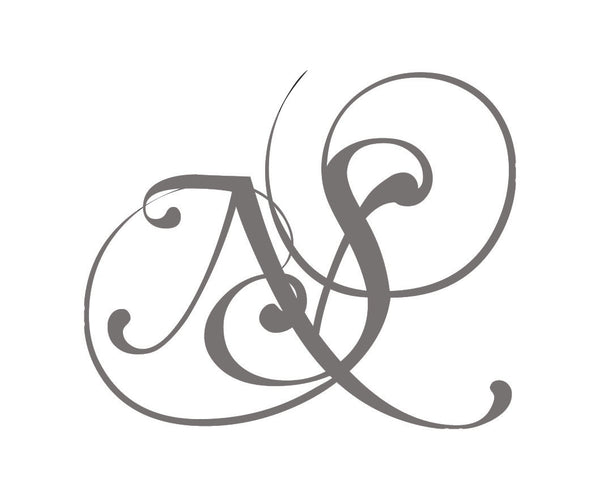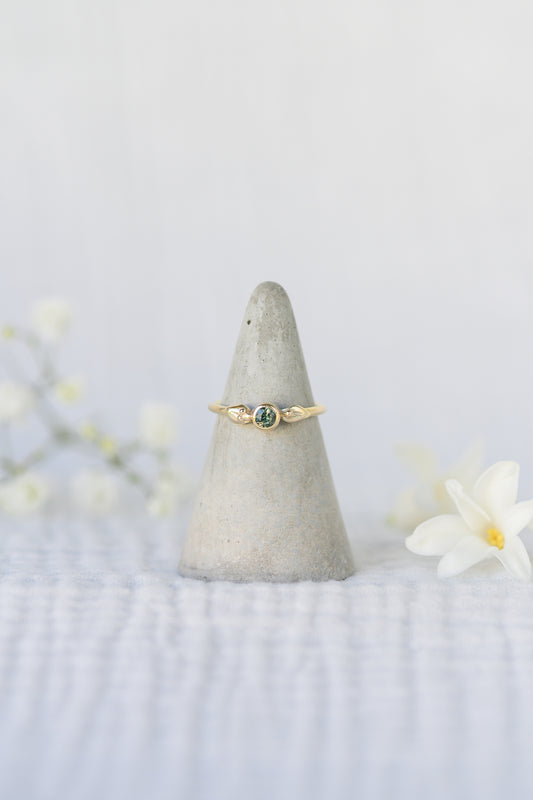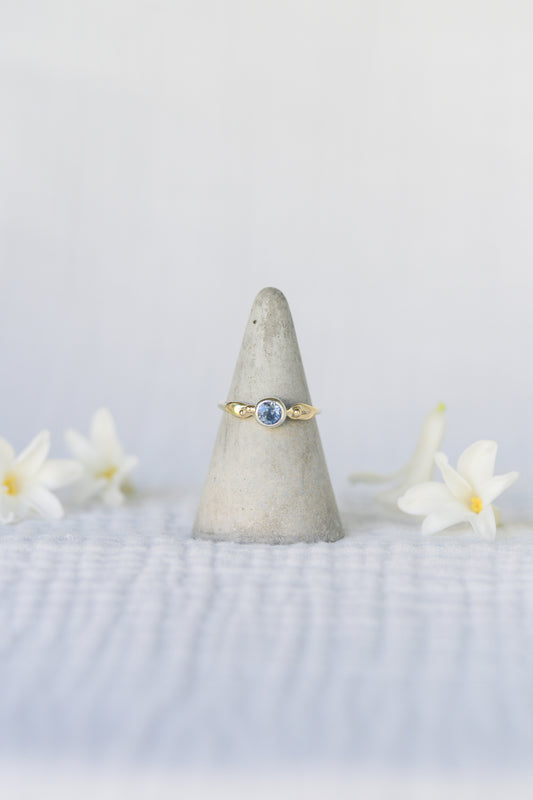White Metals - Silver, Platinum and Palladium
Most of the silver jewellery sold in the UK is sterling silver. This is 92.5% pure silver, with the rest being made up of copper. The copper adds hardness to the silver which makes it more suitable for daily wear. Pure silver although harder than gold is a malleable metal.
An alloy (a mix of metals) with these proportions has been used since at least Saxon times. The UK currency used to be based on a specific weight of sterling silver, which is where the name comes from.
Silver, in contrast to gold, tarnishes in air over time. If worn regularly your silver jewellery will retain it's sparkle as the oils in your skin will protect the surface from the air.
If you have a piece of silver which has been left for some time without being worn and has turned dull or black, a quick rub with a polishing cloth should bring back the shine.

Sterling silver bands
Platinum:
Although platinum is now a popular option for jewellery and as expensive if not more so than gold it's properties were not well understood until quite recently.
Platinum is a very dense and inert metal, very scientific sounding but it means that the metal is tougher and wears less than gold, and also that it doesn't tarnish in air as silver does. It is a good, although expensive option for wedding bands as it lasts very well.
Platinum is very rare and only a small amount is mined every year, so depending on industrial needs the price can be quite volatile.

Palladium hammered band, 1.5mm
Palladium:
Palladium is a similar metal to platinum, although less dense and easier for jewellers to work with it has similar properties.
Discovered in 1802, palladium is relatively new to the jewellery market, although it has been used for some time to make white gold. The UK Assay Office (See my gold, carats and colours page for a bit more info on hallmarking.) have introduced hallmarking for palladium in the last few years.
Palladium at the moment is less expensive than platinum, with a very similar look so is a good option for heavier bands which could be prohibitively expensive in platinum.
It is the industrial uses of platinum and palladium which tend to drive changes in prices (Over half of the palladium mined each year goes into catalytic converters), as well as supply issues. Gold is considered a safe bet and tend to maintain value well at all times, whilst these metals can be more volatile.
Palladium is sold in the UK in 2 different purities, 950 and 500. 950 is simply 95% palladium and 500 is 50%. Not everywhere advertises which version they are selling so if you are comparing prices it's important to be clear which version you are being offered, There will be a difference in the durability of the 2 different versions.
All items on this website are 950.
Both platinum and palladium have a deeper colour than silver which is very bright.

Engraved bands in sterling silver and 9ct white gold
White Gold:
The white gold seen in most shops is plated in rhodium, this is a very bright shiny white. As it is plate (a thin layer placed over the solid metal.) this will wear through and need to be replaced on a regular basis. Underneath the plate 9ct and 18ct white gold are very different.
9ct white is a soft, warm white. it's a very flattering colour and a softer alternative to silver. 9ct gold can tarnish over time if not worn, but this isn't an issue if pieces are for everyday wear.
18ct white gold often contains palladium, and without the rhodium is a similar colour to platinum or palladium.
As standard I do not plate my white gold, in particular I have found 9ct white is a very popular option for wedding jewellery as it's such a flattering colour for a white metal, much gentler than the other options.
I can offer rhodium plating if you are matching another ring that is already plated, just send me an email to discuss.
I supply a range of classic wedding bands as well as custom pieces in all of these metals.

18ct white gold wishbone, 1.5mm, smooth

9ct white gold hammered bands, 4mm
Botanical Engagement Rings - Stock
-
Botanical Ring, repurposed 9ct yellow gold and green sapphire
Regular price £1,050.00 GBPRegular priceUnit price per -
Botanical Ring, repurposed 9ct yellow / white gold and blue sapphire
Regular price £1,250.00 GBPRegular priceUnit price per


